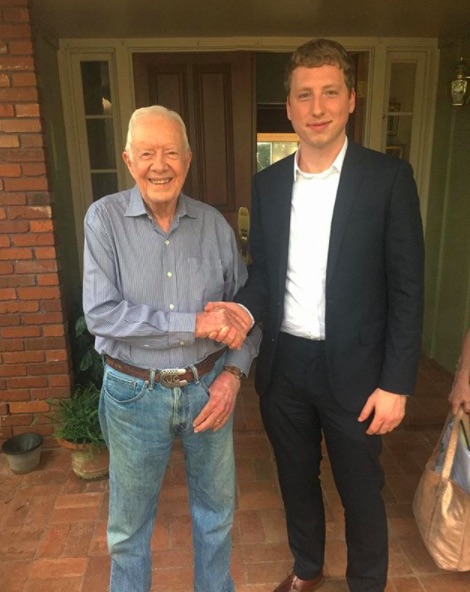
Torch Design/Steven Verdile
Shawn McCreesh is a 2015 St. John’s journalism program graduate who has quickly worked his way to the coveted position of editorial assistant to Maureen Dowd at the New York Times.
Throughout the past few years of his career, he has reported for publications such as Rolling Stone, Men’s Journal, and most recently, the New York Times.
The Torch had an email exchange with McCreesh about his formative past at St. John’s, as well as his outlook and experiences in making a name for himself in the famously ruthless world of journalism.
Q: Throughout your time at St. John’s, what do you think most prepared you for your career in journalism? Was there a particular class, professor, or extracurricular activity that you believe has been vital to it or your work ethic?
Internships. I first interned at amNewYork, a daily newspaper, and later at Rolling Stone. There’s no better way to learn than to be edited by professional journalists in the field, and if you’re lucky, you might find someone to take you under their wing.
The connections I made at those internships proved to be far more valuable than anything I did on campus.
Q: Post-graduation, did you have a hard time navigating “the real world” of journalism? Was it as cutthroat as students are led to believe?
I graduated in the spring of 2015 so I haven’t been out in “the real world” of journalism for very long, but in my limited experience the business of media and certainly of journalism does seem every bit as difficult to navigate as our professors have led us to believe.
It can be difficult to break in and just as hard to survive once you do; entry level salaries are pitiful and New York isn’t getting any cheaper.
My annual salary as an editorial assistant working in magazines was $35,000—that’s about $500 a week, after taxes—so I always had to keep a second job, waiting tables downtown. But if you’re passionate, you’ll find a way to make it work.
Q: Making that change from intern at Rolling Stone to editorial assistant at Men’s Journal, what skills do you think carried over the most?
It’s hard to say I had any skills at that point but one thing I started to learn as an intern, and that served me well as an editorial assistant, was how to anticipate editors’ needs.
These entry-level jobs are all about making life easier for the higher-ups — if you can successfully do that, you should be able to carve out some time to work on your own stuff.
Q: What is your favorite article that you’ve written so far, and why?
I wrote a feature story for RollingStone.com about Michael Alig (“Michael Alig Did His Time for Murder–Now He Wants to Party,”) an infamous New York character who I’d been fascinated by for years.
Alig was a nineties nightlife legend who brutally murdered his friend and spent the last 17 years in prison.
After he got out he started throwing parties again, and I began going to the parties. Reporting it out meant immersing myself in his weird, downtown world and sometimes partying until four in the morning on the weekdays.
I met a lot of eccentric people along the way and had a lot of fun doing it. And RS commissioned a really terrific photographer, Amy Lombard, to shoot for the story, which made the finished product look infinitely cooler.
Q: So right now, you’re the editorial assistant to Maureen Dowd. What is it like working with her, and has your experience at the New York Times differed considerably from your previous positions?
Working with Maureen is indescribably cool. I think it’s really important to find mentors along the way and I often feel I’ve found the ultimate mentor.
She’s like a Jedi master of journalism. It’s a challenging job but we have a lot of fun, too.
It’s totally different than working for a monthly mag.

Q: What does an average day look like for you?
It might sound like a cliché but there really is no such thing as an average day. I think that’s probably true for a lot of jobs in journalism, which is one of the many reasons it’s such an awesome field.
But the one constant is newsgathering—we have to know everything that’s happening, as it happens—so I start each day by reading POLITICO Playbook and the print versions of the Times, the Washington Post, The New York Post, and the Wall Street Journal and then I scroll the homepages of everything from Breitbart to Vanity Fair. My bookmarks are intense.
Q: Is there a particularly exciting experience that you’ve had so far working with Maureen Dowd?
Maureen interviewed President Jimmy Carter this fall for a cover story for the Sunday Review section and brought me along.
Sitting in President Carter’s living room in Plains, Georgia, talking about Trump and North Korea while first lady Rosalynn Carter served us coffee was a totally surreal experience.
The next day was Carter’s 93rd birthday and we went to Sunday school with him. It was a weekend I’ll never forget and is one of the many reasons I’m eternally grateful to Maureen.